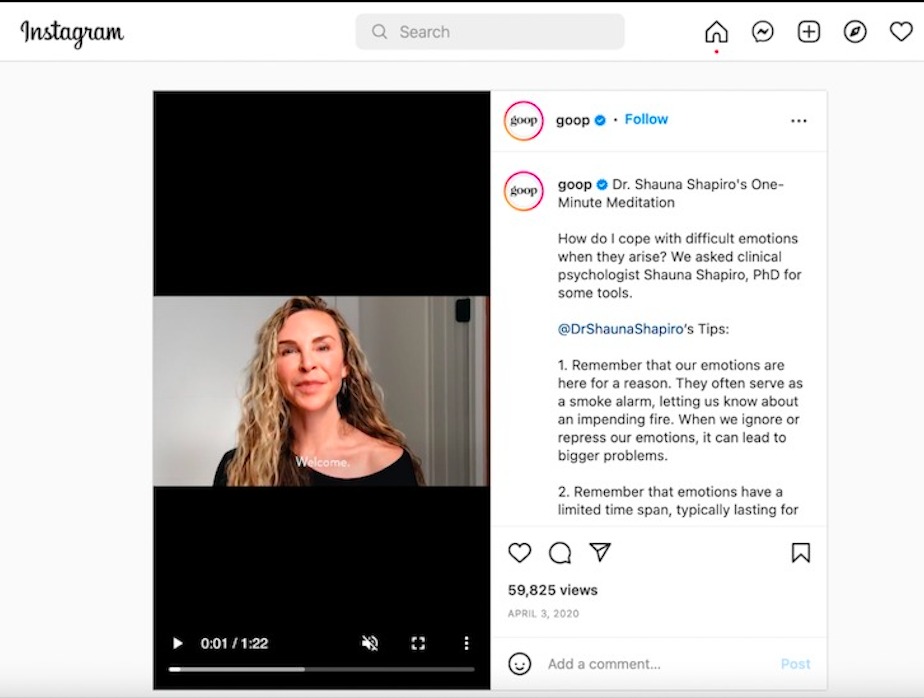
Influencer marketing is increasingly gaining popularity as the preferred choice for brands to grow awareness and drive conversions based on influencer recommendations. According to a report by GroupM Inca, the influencer market size is expected to reach INR.2,200 Cr by 2025.
Although some inevitable risks come with the territory, like fake influencers and dismally low-engagement audiences, influencer marketing can be highly profitable for your brand and your bottom line with the right data set to guide your decisions. D2C brands like Mcaffeine, Sarva, and Bombay Shaving Company are already riding the influencer wave, and getting a stunning ROI.
Don’t take our word for it; 62% of marketers report an increase in sales, higher engagement, and enhanced brand trust as a result of working with the right influencers.
So, in this article, we’ll take you through different kinds of influencer marketing campaigns with a step-by-step strategy you can start leveraging right away. Let’s begin.
Types Of Influencer Marketing
Reportedly, 75% of companies set aside a significant portion of their marketing budget for influencer marketing. This shows that most companies already realise influencer marketing can be pivotal in customer acquisition and social media growth.
There are multiple ways you can collaborate with an influencer on a social media platform. After zeroing in on the right influencer, you’ll want to get crystal clear on your campaign goals. Having more goal clarity from the get-go will allow you to choose influencers who will help you reach those goals rather than collaborating with an influencer who may not aid the process.
So, here are the different kinds of influencer marketing campaigns you can cash in on and drive results:
Long-Term Brand Ambassadors
While a one-off sponsored post with an influencer will invariably give your brand more visibility, an ambassador partnership can be more beneficial for both parties. Once you’ve found an influencer who aligns with your brand’s vision and has an engaged audience in your industry, you can offer an ambassadorship with a detailed set of terms.
Typically, this involves an influencer representing your brand and product by creating regular value-added content for both your audiences. Your brand ambassador must be a key influencer who is an authentic fit for your brand. In addition to belonging to your target demographic, your brand ambassador should align with your brand image and share similar core values.
Influencer brand ambassadors promote your product less frequently to their community and instead focus on integrating your brand as part of their lifestyle for a more convincing and authentic outcome.
For example, Adobe noticed one of their employees was driving more revenue through his social media channel than Adobe’s own social media handles. They realised how effective a brand ambassador could be and launched an Adobe Social Shift Program for their employees to double as brand ambassadors, eventually driving traffic from 400 to 10,000 monthly visitors.

Giveaways, Contests, Events, and Sweepstakes
A great way to drive sales is to launch an influencer marketing campaign with a special giveaway or contest. Having an event or sweepstakes creates a sense of urgency, as the audience feels they have access to an exclusive and discounted opportunity. Add to that the audience awareness and engagement the influencer brings, and you’ve got yourself a great customer acquisition opportunity.
It’s no secret that coupons and discounts almost always work in consumer psychology, but consumers are even more incentivised when they’re routed through their favourite social media celebrity. The result is twofold—the cultural-conformity tendency to be ‘on trend’ with the trendsetters, plus the fear of missing out on a good deal.
Social Media Takeover
In a social media takeover, you hand over the keys to your social account(s) to an influencer. Over a fixed duration, the influencer creates unique content on your page as posts, stories, or reels to help spread your brand message and interact with both audiences. This serves two purposes — the influencer brings over their entire following to your page for cross-promotion and creates fresh, dynamic content with a unique angle.
Here’s a great example of a social media takeover. Goop, Gwyneth Paltrow’s infamous wellness brand, recently hosted an Instagram takeover with Dr Shauna Shapiro, who spoke about the benefits of meditation, and cross-promoted the following between the two pages.

Sponsored Social Media Content
Have you ever seen a post by an influencer with a “Sponsored” tag on the top? It means the brand is sponsoring that particular post for the influencer — this can be monetary, product-based, or service-based.
Sponsored content is a great way to get brand messaging across without blatantly promoting your brand. 80% of millennials believe that sponsored posts provide a positive user experience when presented as native ads, which follow the same form and function as the non-sponsored posts by the influencer but provide more value than simply a product promotion.
Komal Pandey, a fashion influencer frequently collaborates with the top brands in the industry. Here’s an example of her collaboration with Olay, a skincare brand where she’s shown using the products, endorsing them in the caption and even including a call-to-action with a discount code to nudge her audience towards the purchase.

Affiliate Marketing
Influencer and affiliate marketing fit together like Cinderella’s shoe. In this type of campaign, influencers become an affiliate for a brand and promote the product/service and earn a commission on each sale that happens through their promotion.
Skeptical about its effectiveness? 8 out of 10 consumers say they’ve purchased something after a recommendation from an influencer. It’s a win-win for both; the brand gets coveted sales through their target buyers, and the influencer enjoys recurring payments.
Phil Pallen is a case in point. In this video, he recommends free apps for content creators, one of which is Otter.ai, for which he has included an affiliate link in the video description.
Product And Service Reviews
This is one of the most straightforward influencer marketing strategies for building trust amongst a new audience. Having an influencer review your product/service on social media with their honest thoughts, opinions, and experience is a great way to spread the word about your offering with a touch of authenticity. The influencer also personalizes their review, often sharing their experience through storytelling for better relatability.
Vishnu Kaushal, an entertainment influencer who creates funny and relatable content on Instagram often collaborates with brands and endorses the product in the most innovative way by injecting it into his video narrative.
How To Create A Successful Data-Driven Influencer Marketing Campaign
If you’re ready to get started with influencer marketing, here’s a step-by-step approach to follow for a cohesive and strategic campaign.
Identify Influencers Relevant To Your Brand
The first step in launching an influencer marketing campaign is to find influencers in a similar niche who share the same brand values and have an audience that matches your target demographic.
Here’s how you can vet influencers for your brand campaigns:
- Choose a suitable social media platform: The platform you choose depends on your influencer marketing goal and target audience. For example, a digital marketing agency with a startup target audience might benefit from Instagram, while an AI brand with a target audience of tech founders might find the most success on Twitter.
- Use social listening to identify types of influencers: Social listening involves tracking all mentions of the influencer you’re vetting. An influencer may have an overly-manicured profile and feed, but you can find more about their audience and history by looking at how they interact with their audience, and vice-versa.
A social media tool like Falcon.io can monitor social media accounts for insights and compare the data to benchmark accounts. This does most of the heavy lifting for your brand–delivering the data you need to make your decision.
- Analyse the influencer’s audience base + engagement: Calculating an influencer’s engagement rate is a reliable way to determine how active their audience is. You can derive the engagement rate by averaging the number of likes on their ten most recent posts and dividing them by their total followers. An engagement rate of above 2% or 3% is usually great.
Plan Your Budget And Forecasted ROI For The Campaign
As with any other marketing campaign, you’ll need to chart out an expected budget and ROI from the campaign, which enables you to assess whether your marketing efforts yielded the expected results. Your budget should include influencer fees, production costs, ad spend, and any analytics software you’re using.
In influencer marketing, ROI is most commonly calculated using Earned Media Value (EMV)—the total monetary value of the exposure your influencer marketing campaign garners. Hypeauditor’s report suggests brands can expect an average of $4.87 earned media value for every $1 spent in an influencer marketing campaign.
Decide On Your Marketing Goals, Content, And Messaging For The Campaign
The content of your campaign has to be woven around the goals to yield specific goal-centric results.
- If your goal is to expand your audience, create shared content with an influencer who doesn’t have the same audience as you. For example, a customer relationship management software looking to expand its reach to the tech startup space can collaborate with a tech entrepreneur coach.
- If your goal is to build awareness for a specific product or service, plan an influencer marketing campaign with reviews or giveaways. For example, a website building and hosting company can create a giveaway campaign for free templates with a graphic design influencer.
- If your goal is to increase your social following, create a campaign that incentivises following your brand’s social media handles. This can include a social media takeover with an influencer or a contest where following your page is a prerequisite. For example, a project management tool launches a campaign with a freelance mentor. The freelance mentor hosts an Instagram live on the tool’s social media page.
How To Track Your Data-Driven Marketing Campaign
33% of marketing teams don’t track the ROI from their influencer marketing campaigns. Once you’ve launched your influencer marketing campaign, you’ll want to measure how effective it was; else, you’re just throwing stuff on the wall, hoping it sticks.
Here’s how you can track your influencer marketing campaigns and plan your future campaigns or tweak your existing strategy:
- Use custom URLs/trackable links to assess metrics: Ensure you’re using a custom URL or a trackable link in your campaign so that you can measure the fresh traffic directed from the influencer’s audience. This is particularly important when launching an affiliate marketing influencer campaign to track the conversions.
- Monitor social media analytics: Keep a close eye on the influencer’s social media posts once your campaign is up and running. Track the insights on each post, especially the reach and impressions. You can use this data to compare your regular posts with the influencer’s to get quantitative and qualitative insights about the audience and product to guide your future campaigns.
- Use promo codes to measure sales: If your influencer marketing campaign is centred around revenue generation, create a unique promo code for your influencer to share with their following. This will help keep the influencer-driven sales separate from your organic sales and also help in further data analysis.
The Power Of Data-Driven Campaigns
It’s no surprise that influencer marketing has carved out a space for itself in the marketing world and isn’t going away anytime soon, with projections set to reach $24.1B by 2025.
But your influencer marketing campaign will flat on its face if you don’t use data to back your decisions, the campaigns you carry out, the influencer you choose, and how you guide your influencer marketing strategy forward.
Use this article to identify the type of influencer marketing campaign you should conduct based on your goals and follow our strategic roadmap to inspire your own and get glowing results.
Want to learn about using marketing for your brand or a B2B product? Sign up for The Maker’s Summit and learn from the top 1% of product experts in India.







![Read more about the article [Funding alert] Women skilling and employment platform WiT-ACE raises $1M in seed round led by founders of Cit](https://blog.digitalsevaa.com/wp-content/uploads/2021/03/funding-1615270729201-300x150.png)
